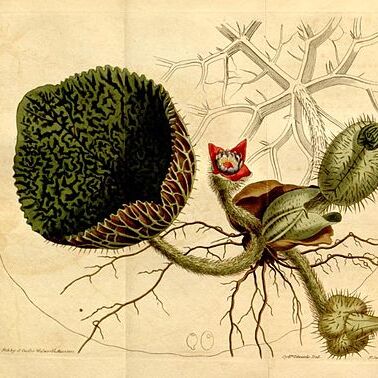Submerged leaves not prickly; leaf blade sagittate or elliptic, 4--10 cm, base deeply cordate. Floating leaves prickly on petioles and along veins; leaf blade abaxially dark purple and adaxially green, to 1.3(--2.7) m in diam., subleathery, abaxially sparsely pubescent, adaxially glabrous, base emarginate or sinuate; veins abaxially strongly ribbed; primary veins prickly on both surfaces. Flower to 5 cm in diam. Peduncle stout, densely prickly. Sepals triangular-ovate, 1--1.5(--3) cm, abaxially dense-ly prickly; prickles retrorse. Petals outer purple-violet fading to inner white, oblong-lanceolate, 1(--2.5) cm. Ovary 7--16-loculed, each locule with 6--8 or more ovules. Fruit dark purple, globose, 5--10 cm in diam., spongy, densely prickly. Seeds black, 8 to many, globose, 6--10 mm in diam.; testa thick, rigid. Fl. Jun--Aug.


